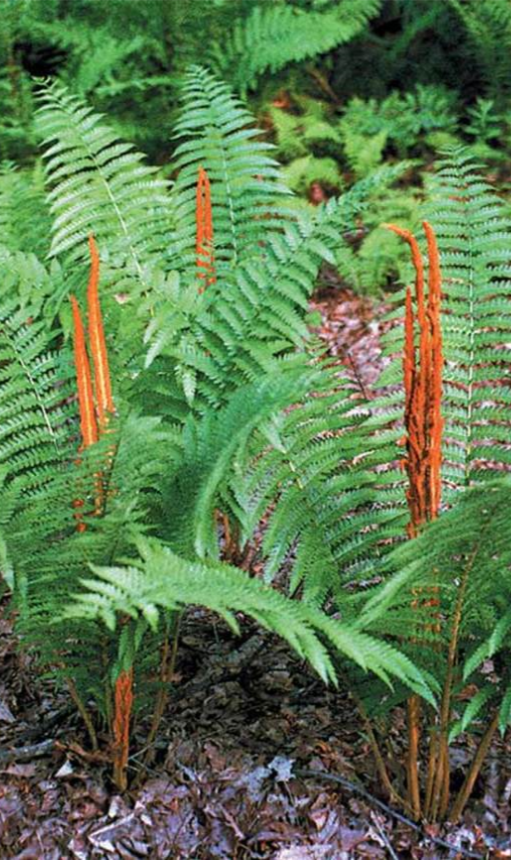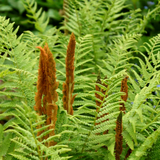- 2024 Native Trees
- >
- Grasses, Sedges, and Ferns
- >
- Cinnamon Fern (Osmunda cinnamomea)
Cinnamon Fern (Osmunda cinnamomea)
Height: Typically 2 to 3 feet, but can grow up to 5 feet
Bloom Time: Non-flowering
Bloom Description: Non-flowering
Sun: Part shade to full shade
Attracts: Birds and butterfly/moth larvae
Osmundaceae Family
Native to Jefferson County
Cinnamon Fern is fond of moist soils along shady streams, in woodlands, and on shaded ledges.
The leaves of the Cinnamon Fern, called fronds, are organized in circular clusters. The plant has both sterile and fertile fronds. In spring, the fertile silvery fronds appear, ultimately standing upright and turning chocolate-brown or cinnamon-colored. Sterile “fiddleheads” unfurl into the large green fronds of the plant, bending outward up to three feet. The color and texture difference between the fertile and sterile fronds makes the plant a striking feature in the landscape.
Cinnamon fern does best in shade or part shade, but can also grow in full sun if the area is consistently wet.
Cinnamon fern will do well in moist, organic, slightly acidic soils such as those found at the edges of shady ponds and streams, shaded borders or woodland gardens. Once established, the plant is long-lived and does not spread aggressively.
Cinnamon Fern’s circular growth habit attracts ground-nesting birds. Additionally, the fuzz that covers young fiddleheads is an attractive nest material. Cinnamon Fern is a host plant for 8 species of caterpillars. ■





